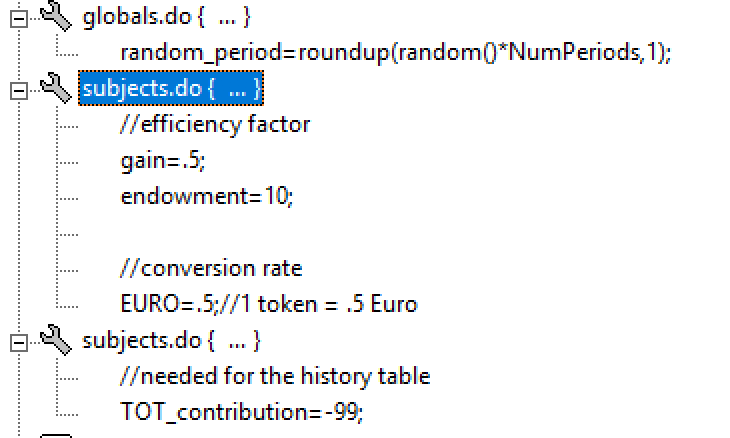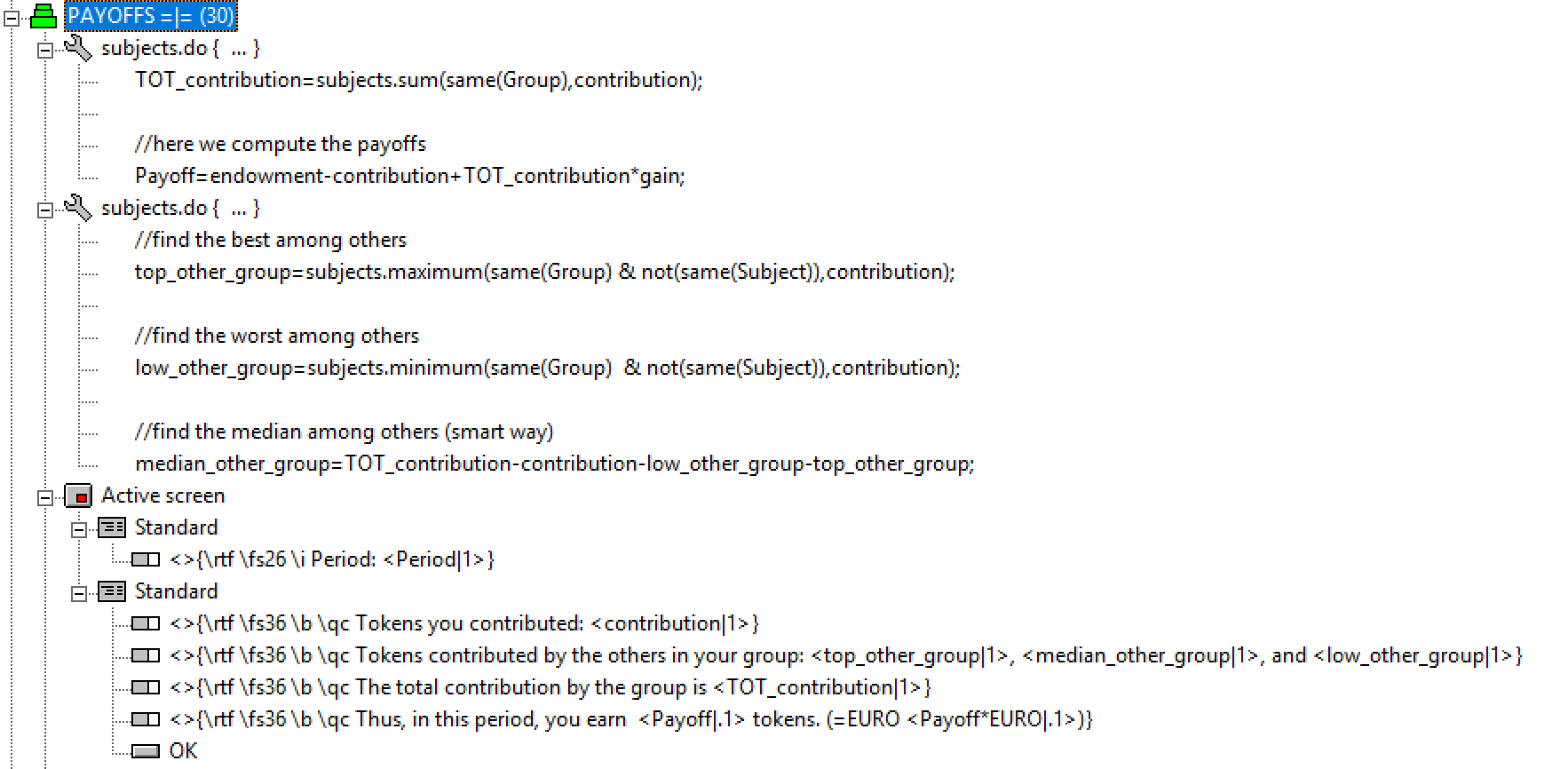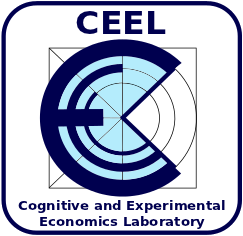
A z-Tree Course
5: A Public Goods Game
Matteo Ploner
Università degli Studi di Trento
A Public Goods Game
A Public Goods Game
- Participants can decide how much contribute to a "public" project out of their endowment
- Participants are in a group of N subjects (usually 4)
- What is contributed is multiplied by an efficiency factor $1/N<\alpha<1 $
- What is not contributed is kept in a private account
- Private incentives are to contribute nothing to the public account
- But, contributions are efficient
- The interaction is repeated T times in a partner fashion
-
$\Rightarrow$ social dilemma
Preliminaries

- Define first the random period that is going to be selected for payment
- This program is executed in the globals table (globals.do)
random_period=roundup(random()*NumPeriods,1);- The, define some general parameters
Contribution Stage


- Remember participants of the Period they are in
- Collect contribution as an integer between 0 and 10
Stage Paytoffs

- First sum up all contributions by those in the group (subject.do)
- The compute own payoff as defined by the payoff function
- $\Pi_i=E_i-c_i+\alpha \sum_j c_j$
TOT_contribution=subjects.sum(same(Group),contribution); //here we compute the payoffs Payoff=endowment-contribution+TOT_contribution*gain;
Stage Payoffs (ii)

- We also provide participants with additional information
- The exact contribution of those in the group
//find the best among others top_other_group=subjects.maximum(same(Group) & not(same(Subject)),contribution); //find the worst among others low_other_group=subjects.minimum(same(Group) & not(same(Subject)),contribution); //find the median among others (smart way) median_other_group=TOT_contribution-contribution-low_other_group-top_other_group;- We exploit the fact that we have groups of 4
Stage Payoffs (iii)


- We provide detailed information to participants about the choices
- The exact contribution of those in the group
- We also convert the earnings in EURO, according to the conversion rate we chose
History


- We provide participants with information about the choices in each Period
- We use an History Box
- A very convenient box to retrieve history data
- Just specify the variable of interest as an output variable
- However, we also "store" data away for later in the summary table
//write the relevant data in a table summary.new{ Period=:Period; Subject=:Subject; Payoff=:Payoff; }
Final Payoff

- This stage is displayed only if the last period is reached
Participate=if(Period==NumPeriods,1,0);- Then we also retrieve the payment in the randomly defined period (in globals)
- The payment is in summary table
//selected period selected_period=globals.find(random_period); Final_payment=summary.find(same(Subject) & Period==selected_period,Payoff);
Assignment
- Take the PGG
- Replicate it as it is, but with groups of 5 participants
- Create a new experiment that has the same structural features of the PGG but differs in the way data are collected
- 2 Participants
- One chooses (Pl.1) an integer between 0 and 10
- The other (Pl.2) chooses an integer between 0 and 10, for each potential integer chosen by the other
-
Choice of the other 0 1 2 3 4 5 6 7 8 9 10 Your choice - The choices of the two in the group are then matched and payoffs computed
- As an example, if Pl.1 chooses 3, and Pl.2 had chosen 2 in correspondence to 3, the total contribution is 5
